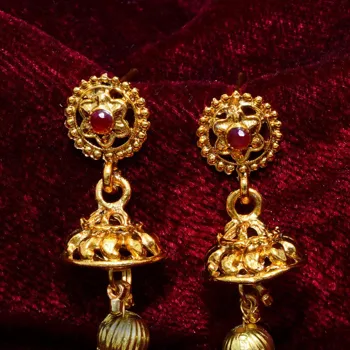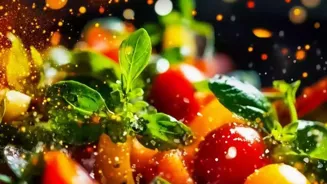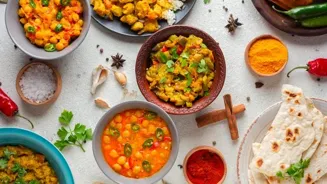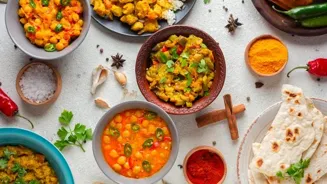Discover the Cultural Significance of Fashion: Unveiling 10 Trends & Their Origins. Unravel the stories behind Indian fashion
Fashion, more than just fancy clothes and fleeting trends, is a mirror reflecting
our society, history, and values. From the humble beginnings of clothing as mere protection to its current status as a global industry, fashion has always been intertwined with cultural identity.
Let’s take a look at ten trends and explore the stories they tell about our past and present, all viewed through a Desi lens.
Khadi: Symbol of Indian heritage and resistance
First off, let's talk about Khadi. So simple, so Indian! Khadi isn't just cloth, it's a statement. During our freedom struggle, Gandhiji promoted Khadi as a symbol of self-reliance and resistance against British rule.
Wearing Khadi meant you were supporting local weavers and challenging foreign dominance. Even today, Khadi holds a special place in our hearts, reminding us of our history and the values of sustainability and simplicity.
You'll often see politicians and prominent figures wearing khadi, especially on important national days. It’s a timeless example of fashion carrying a powerful message.
Salwar kameez: traditional Indian attire with enduring popularity
Then there's the salwar kameez, a quintessential Indian outfit. While variations exist across different regions, the basic structure remains the same: loose trousers (salwar) paired with a tunic (kameez).
The salwar kameez is believed to have originated in Central Asia and was adopted by the Mughal rulers in India. Over time, it evolved into diverse styles like the Anarkali, Patiala, and Churidar, each reflecting regional aesthetics.
The comfort and versatility of the salwar kameez are undoubtedly major reasons for its enduring popularity. It’s the go-to outfit for many Indian women, perfect for everything from college lectures to festive celebrations.
Ancient Bandhani tie-dye art in Gujarat and Rajasthan
Now, consider the vibrant Bandhani tie-dye. This ancient technique, primarily practiced in Gujarat and Rajasthan, involves tying small portions of fabric with thread and then dyeing it, resulting in intricate patterns of dots and designs.
Bandhani is traditionally associated with auspicious occasions like weddings and festivals. The colours and patterns often carry symbolic meaning, reflecting the community's beliefs and traditions. The skill of Bandhani is passed down through generations, making it a living heritage.
The process is mesmerizing; each tiny knot tied with precision creates a unique piece of art.
Jhumkas: timeless earrings, cultural symbols in Indian adornment
Jhumkas, those dangling earrings, are another classic. They're not just jewelry; they're a cultural touchpoint. Jhumkas have been a part of Indian adornment for centuries, with depictions found in ancient sculptures and paintings.

They come in various shapes, sizes, and materials, from simple terracotta designs to elaborate gold and gemstone-studded pieces. Jhumkas are often paired with traditional outfits like sarees and lehengas, but they can also add a touch of ethnic charm to Western wear.
Think of the classic Bollywood look - a colourful saree and a pair of statement jhumkas. Timeless!
The saree: a symbol of India's rich textile heritage
Let's appreciate the majesty of the saree. This draped garment is more than just a piece of cloth; it's an art form. The saree is considered one of the oldest forms of clothing in the world, with its origins dating back to the Indus Valley Civilization.
Worn in countless styles across India, each region boasts its own distinct weave, design, and draping technique. From the intricate Kanjeevaram silks of South India to the delicate Chanderi cottons of Madhya Pradesh, the saree showcases India's rich textile heritage.
The way a woman drapes a saree can tell you where she's from, her social status, and even her personal style.
Mehndi: Symbol of luck in Indian weddings and festivals
Finally, let's not forget the significance of Mehndi, or henna. Applying Mehndi is an integral part of Indian weddings and festivals. The intricate designs are not just decorative; they are believed to bring good luck and blessings to the bride and groom.
The art of Mehndi has been practiced in India for centuries, with its roots in ancient Ayurvedic traditions. The practice continues today, often a fun and celebratory event. The aroma of henna, the intricate patterns, and the festive atmosphere all contribute to the magic of Indian celebrations.
Mehndi is a beautiful example of how fashion traditions are passed down through generations.
Indian fashion trends reflect identity, heritage, values
Fashion is a powerful tool for expressing identity, preserving heritage, and communicating values. These ten trends are just a small glimpse into the vast and fascinating world of Indian fashion and its cultural significance.
By understanding the origins and stories behind these trends, we can gain a deeper appreciation for the rich tapestry of Indian culture. Keep exploring, keep learning, and keep celebrating the beauty of Indian fashion.
Indian fashion reflects cultural pride, resilience, and artistry
These trends, passed down through generations, carry stories of resilience, artistry, and cultural pride. They remind us that fashion is far more than just what we wear; it's a reflection of who we are, where we come from, and what we value.
From textiles to jewellery, each element of Indian fashion holds a special place in our hearts and continues to evolve with time.
Fashion trends reflect cultural identity, artistry, and heritage
These trends demonstrate how deeply fashion is interwoven with our cultural identity, serving as a tangible link to our past while also evolving alongside modern sensibilities. They showcase the artistry, skill, and cultural pride that are deeply embedded in the fabric of our nation.
By cherishing these traditions, we not only celebrate our heritage but also ensure their continued relevance for generations to come.









